Ausgrabung 2024
From July 9 to August 5, 2024, the excavation campaign for the FWF project "Rethinking Periphery in Late Antique Arabia" was conducted in conjunction with the teaching excavation of the University of Vienna's Institute of Classical Archaeology.
Finishing the excavation of the southern church (trench F06) was the main goal of the 2024 excavation. Additionally, the project partners conducted geological and archaeobotanical investigations.
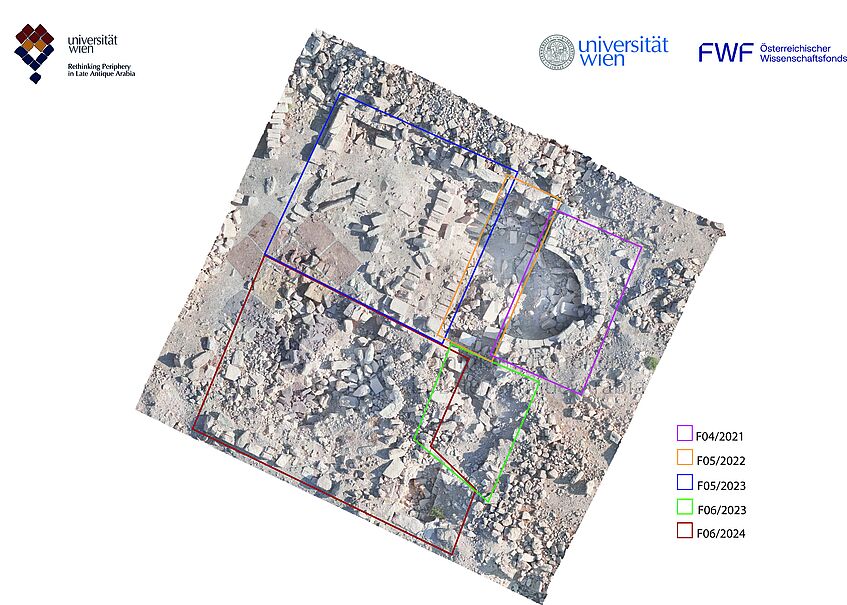
Illustration of the excavation trenches in the area of the double church complex of al-Jumayil.
The Excavation in F06
Trench F06, of which a small part was already excavated in 2023, covers the entire area of the southern church of the double church complex. The area includes the nave concluded by an apse, the presbytery raised by two steps, and delimited by a chancel screen that was inserted in square sockets and grooves to secure the posts and panels of the screen (of which remains can be still seen in situ). The area of the apse and the eastern presbytery were excavated in 2023.
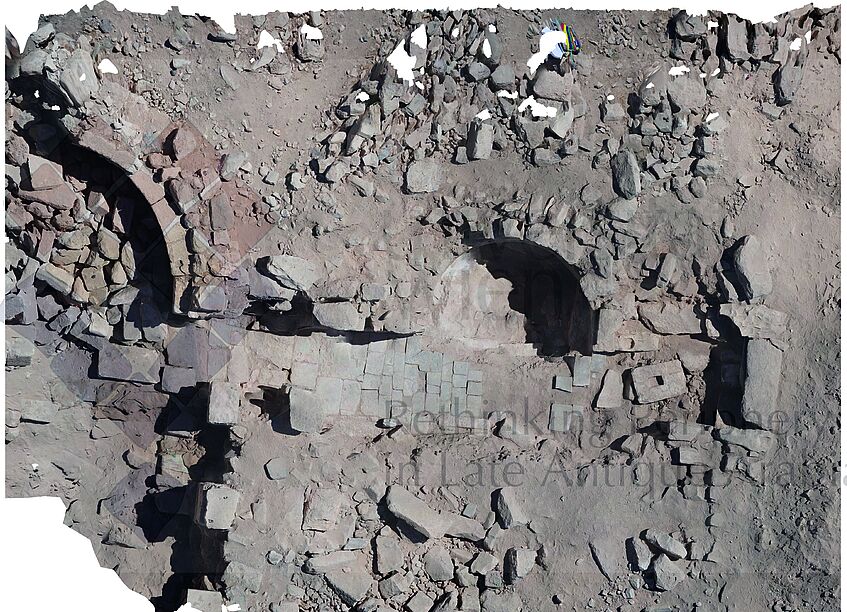
Orthophoto of the eastern area of the two churches and the connection in front of the first pilaster of the central row.
Few modern looting holes had a significant impact on the stratigraphy of the unexcavated areas in F06. The visibility of the southern structures as documented by pictures taken by Savignac around 1930, may explain the intensity of the looting in this area. This can be visible in three interventions that reached beneath the architectural structures of the building's final phase, as well as heavily rummaged upper levels.
However, large tracts of undisturbed stratigraphic deposits and loosely bound stone structures were revealed beneath these recent disturbances. The placement of the stone structures directly above the floor and the order of the various ash layers exhibit similarities to the northern church (F05).
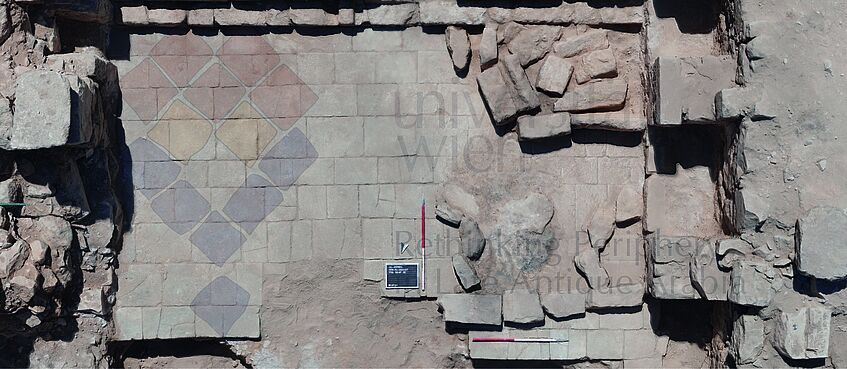
Orthophoto of the stone structures above the slab floor in F06.
As suspected after the excavation of the eastern part of the presbytery in 2023, a floor of rectangular dark grey to black stone slabs paved the south church. Only in the north-west corner the remains of a polychrome mosaic with a stranded guilloche pattern was found. This attesting of the existence of former mosaic floor in the church.
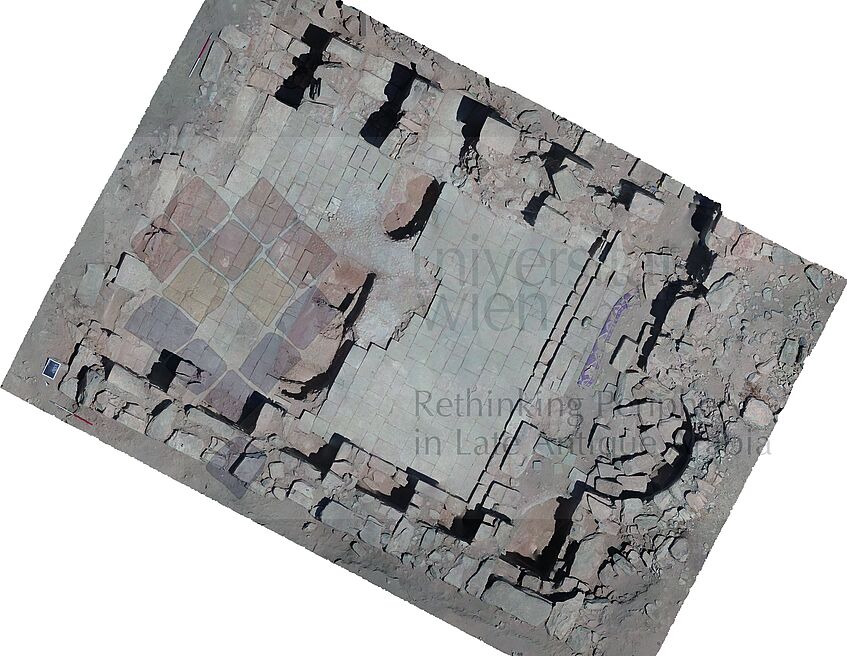
Orthophoto of the stone slab floor and the mosaic remains in the southern church.
The two large looting holes located in the center of the church and extended to a depth of approximately one meter below the floor allowed the discovery of several collective burials. The graved were dug directly into the bedrock and included limited skeletal remains and small artefacts all excavated and documented. The tombs were sealed through the laying of the final slab floor of the building. The limited number of remains suggests the tombs were emptied at an earlier date probably during the remake of the church floor.
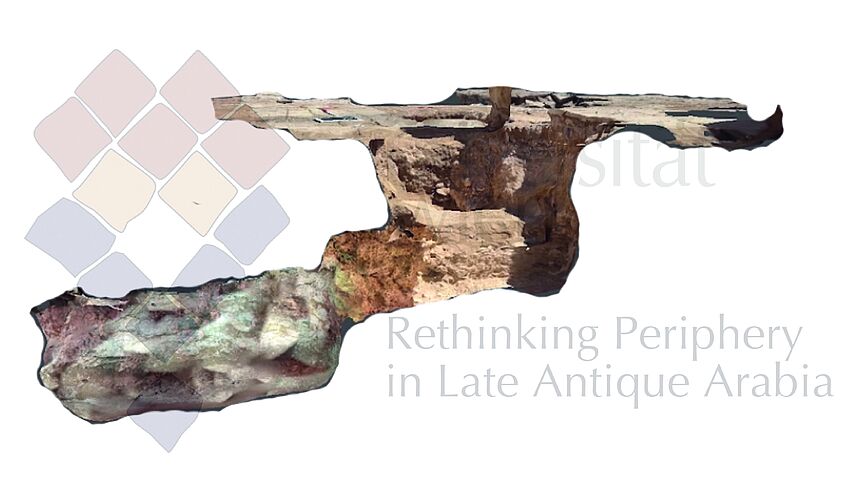
LiDAR profile of grave SE95
The first geological and archaeobotanical studies were also conducted during campaign 2024 by Belgian and Jordanian project partners. To gather archaeobotanical specimens for additional examination, Frits Heinrich and Annette Hansen of the Research Group for Interdisciplinary Historical Food Studies (FOST) at the Vrije Universiteit Brussel worked in the field as well as with soil and ash samples from the year prior. Yarmouk University's Prof. Khaled Al-Bashaireh collected rock, mortar, and plaster samples from the location for geological and archaeometric examination. By using these techniques, we will be able to learn more about the ecclesiastic complex and its use during Late Antiquity and Early Islamic periods.
